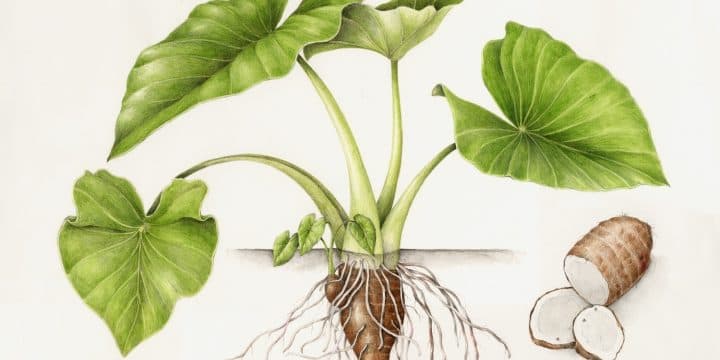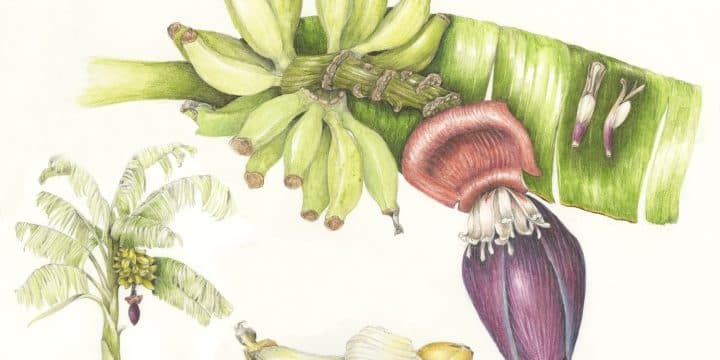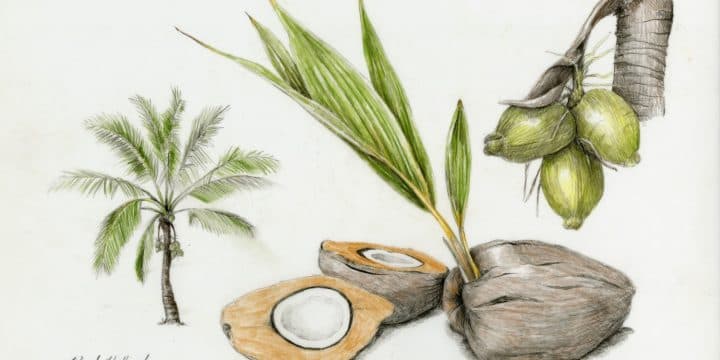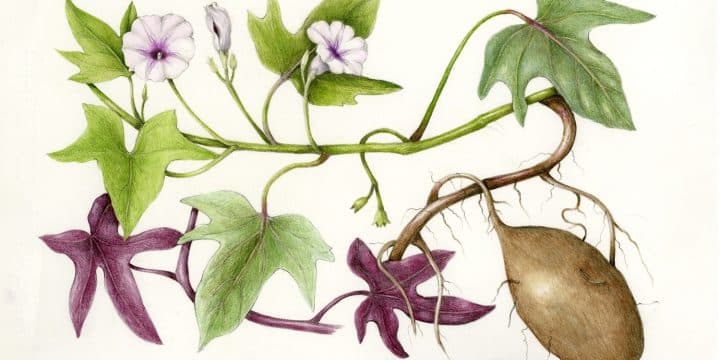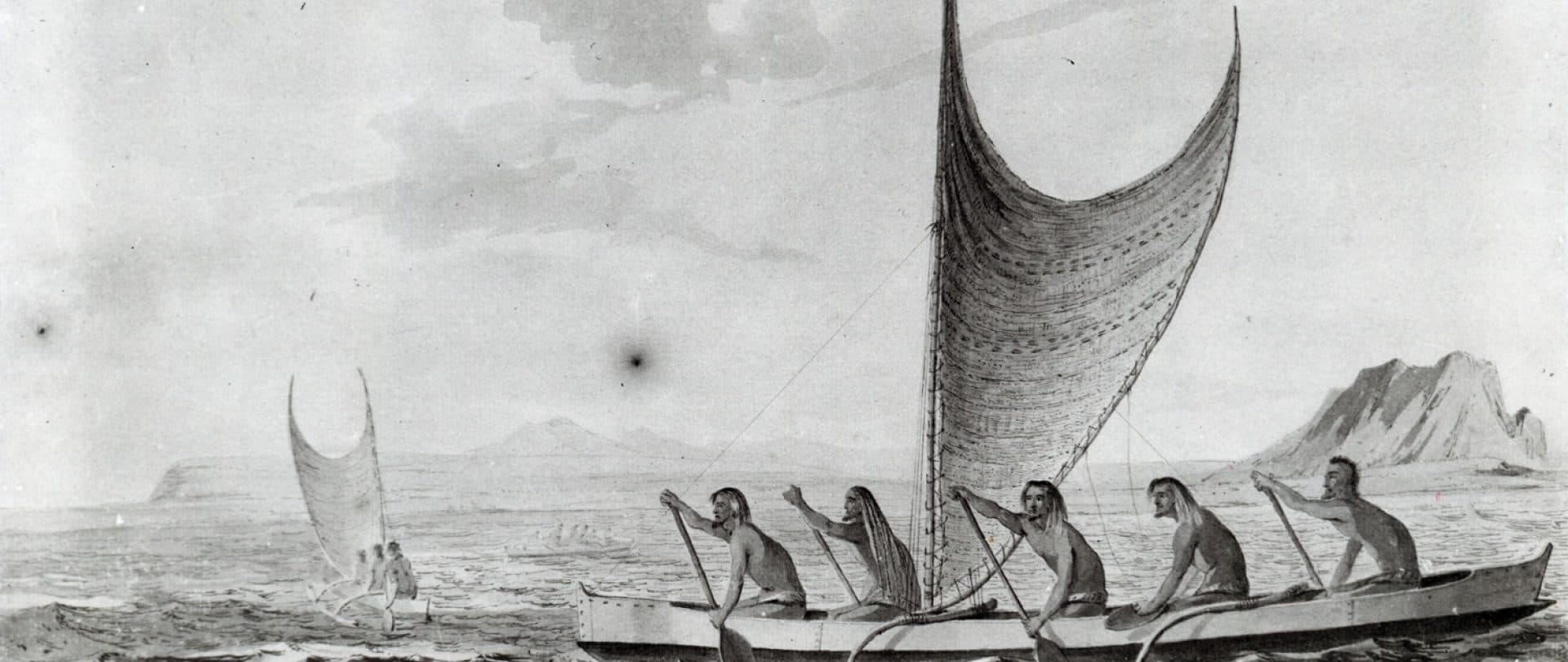
Traveling Treasures
Canoe plants that helped to shape Hawaiian culture.
BY Krystal Kakimoto
When Polynesian voyagers embarked on their journey across the Pacific Ocean between 1000 and 1200 AD, they strategically packed their wa‘a (canoes) with plants to sustain them along their passage and be used to establish a life in their new home. With space being precious aboard their sailing vessels, each selected plant needed to accomplish multiple uses—from serving as food sources to medical treatments and even to creating material for cordage, fabric and containers. A total of 24 plants were selected for the voyage, and today, we hold these plants in exalted status because of the inextricable ways they are tied to Hawaiian culture.
‘Awa (Kava)
A member of the Pepper family, ‘awa is a small shrub with heart-shaped leaves used to treat various ailments. From applying its ashes on lesions to rid children of fungal disease to being chewed to reduce migraine headaches, ‘awa is best known for its use as a relaxant. Root pieces were selected and washed to prepare the therapeutic drink before the pieces were pounded or chewed. The resulting pulp was strained, and the liquid was mixed with water. The drink was typically enjoyed as a communal beverage, specifically for those who undertook strenuous labor as an elixir to ease muscle stiffness and fatigue.
Kalo (Taro)
A principal food plant of Hawaiian culture, the kalo’s existence is intertwined with the Hawaiian creation chant, the “Kumulipo.” From darkness, Earth Mother Papahānaumoku (Papa) and Sky Father Wākea created the universe and a daughter, which they named Ho‘ohokūkalani. After a coupling between Wākea and his daughter Ho‘ohokūkalani, a child was born as a stillbirth. Named Hāloanakalaukapalili (Hāloa), Ho‘ohokūkalani buried the baby in the ‘āina(earth). From the kūpapa‘u (corpse) grew the first kalo, and today, the kalo is held as the ancestor of the Hawaiian people.
The kalo plant comprises dark green leaves connected to a long stem. Below the stem is the corm of the kalo plant. The corm is steamed and pounded to create a food product called poi. In ancient times, poi was such a massive part of life that it is estimated that an adult would eat approximately five pounds of poi per day. The juice of the kalo plant was also used to treat fevers, and the leaves were wrapped around areas stung by bugs or insects to reduce inflammation.
Kī (Ti leaf)
Known for its protective powers and ability to ward off evil spirits, kī is an adaptable plant measuring between three to twelve feet in height with long, glossy leaves ranging from green to yellow and even red. The leaves of the kī plant were essential to Hawaiian culture and frequently used in cooking as cups and plates and wrapped around food before it was placed in the ‘imu (traditional underground oven). Around the home, the leaves were also used as roof thatching or woven into raincoats. There is even a method where the leaves of the kī plant were braided and fashioned into sandals. An important use of the leaves was to wrap ho‘okupu (offerings) for religious ceremonies or the ali‘i (rulers).
Medicinally, the leaves of the kī plant were wrapped around the foreheads of those suffering from fevers to bring down their temperature. The leaves were also boiled and made into a tonic, which was known to relax muscles and nerves. In addition to its many uses around the home, the kī plant was also integral in the preparation of lei and hula skirts.
Kō (Sugarcane)
In addition to serving as a sweetener for food, such as haupia (steamed coconut pudding)or kūlolo (chewy kalo-based dessert), kō was also used to sweeten bitter medicines to make their ingestion more palatable. For ailing infants, the sugar water produced from the kō was often cooked over an open fire and fed to nursing babies. The cuttings of kō were also brought on long journeys and chewed for a bit of energy.
Around the home, the leaves of the kō were used to thatch the inside of the hale (house) when pili grass was not available. The plant was also known for the height its stalks reached, sometimes fifteen feet tall, and it was planted in specific areas to be used as windbreakers or borders between properties.
Kukui (Candlenut)
The kukui tree was brought to Hawai‘i as a seed the ancient voyagers planted once they made landfall. It was known as an efficient plant that benefited nearly all aspects of life. Its first use benefitted the home with the immense amount of shade its broad canopy provided. The nuts that fell from the tree also had a variety of uses. One of the kukui’s most popular uses was as a light source in ancient Hawai‘i. The rich oil the kukui nut produced was placed into vessels and lit. Often, keiki (children) were tasked with keeping the kukui nut candles lit. The same oil was used to treat fishing nets before use and protect the net material against water.
The kernels of the kukui nut were used medicinally and as a food source. After roasting over hot coals, the exterior of the kukui nut turned a blackish-brown color. The nuts were cracked open, and the kernel was removed before being finely chopped. This resulted in a delicious relish called inamona that was used as an ingredient in poke (a raw fish dish). However, overeating kukui nuts was also a medical treatment for constipation, so it was important to eat this delicious food in moderation. The soot from the roasted nut was used to create black dye for tattoos and ink for canoes and kapa (backcloth) decoration.
Mai‘a (Banana)
Mai‘a served as a staple fruit in the diets of ancient Hawaiians and were so cherished that they were presented to ruling chiefs as gifts. However, there were kapu (prohibitions) against women eating most types of bananas, with death being the penalty for disobedience. As with the kī, the leaves of the mai‘a were also used to wrap food during cooking and as serving trays or placemats. The leaves were also used to fashion sandals and even water pipes for irrigation. And, as in tradition with other canoe plants, even the flower buds of the plants were used. The male inflorescence (flower buds) would create dyes ranging from yellow to brown, which were used to color kapa.
Niu (Coconut)
Also known as the “tree of life,” niu was exalted as the plant form of the God Kū (Hawaiian god of water, politics, farming and fishing) and the Goddess Hina (Hawaiian goddess of the moon, ocean and motherhood). Nearly every part of this towering plant was used. The wood from its trunks was used to make house posts, small canoes and food containers while the stiff mid-ribs of the leaves were gathered and bound to form brooms. The fibrous husk of the niu produced a strong fiber used to create a coarse rope called ‘aha, or sennit. The cordage was used to hold canoes together or woven into nets. The niu's fruit provides nutritional sustenance from its white flesh to the water and milk it creates. Fishermen were even known to chew the flesh of the niu and spit it out into the water to create a glossy sheen to see the fish better below.
Noni (Indian mulberry)
Noni is a powerful medicinal plant grown from an evergreen tree that reaches nearly twenty feet in height. Much of the medicine was created from the bulb-like fruit that is yellow when young and whitens as it matures. Hawaiians were known to take the pounded flesh of young noni fruit and apply the salve directly to deep cuts as an antiseptic. They also created a tonic from the mature noni fruit, which was allowed to ferment in the sun, producing a concentrated, pungent drink used to treat high blood pressure and arthritis and even increase physical endurance. The acquired taste was sometimes too strong, and some kō (sugarcane) juice was added.
‘Uala (Sweet potato)
‘Uala, a starchy root vegetable, was another cornerstone of the Hawaiian diet, providing lots of fiber and abundant vitamins like A, C and potassium. The high-yield crop was planted on mounds called pu‘e and produced vines that bore tubers in purple, orange and white. The ‘uala was often steamed in the imu or boiled in water when used as a food source. After cooking, the ‘uala was either directly eaten or mashed into a product similar to poi. As a medical treatment, ‘uala was used to create a tonic consumed to increase lactation, and raw ‘uala was blended with kī (ti leaf) stem and niu water to induce vomiting when necessary.
‘Ulu (Breadfruit)
Another food source for ancient Hawaiians was the fruit of the ‘ulu tree. Known to be similar to potatoes, the meaty, sweet pulp of the ‘ulu plant was mashed or cut into small, chip-like pieces. As with ‘uala, ‘ulu was also a nutrient-dense food known for its high amount of antioxidants, fiber and iron. The milky sap of the ‘ulu plant produced a strong glue that was used in canoe bindings, while the wood from the large tree was used to create surfboards, canoes and drums. The plant's male flowers were also collected and burned to serve as a mosquito repellant.
The Polynesian voyagers were remarkable with their strategy and planning when selecting the plants for their long journey. These careful choices not only supported their survival at sea but facilitated the establishment of a sustainable life in their new home.

